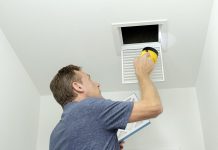Various advances in the electrical field have made it easier to evaluate complex systems. For instance, cable engineers can establish the condition of a medium voltage or high-voltage cable with the help of diagnostic equipment. Tan Delta Diagnostics info offers tools to simplify the evaluation process, allowing the detection of faults or failures in various electrical components and systems.
Typically, high-voltage cables and other components are prone to water damage, which may manifest as corrosion. But, detecting such failure points can be cumbersome or even impossible if a technician has to contend with very long cables. Fortunately, cable engineers can precisely deploy a series of test instruments to pinpoint a cable’s failure.
Report diagnostic info entails a detailed account of a cable or system error. Let’s use an analogy to drive the point home. When a Smartphone’s operating system encounters issues, users can use the device’s built-in feature to send diagnostic reports to the system’s developers. That way, technicians can diagnose errors and assist users in resolving a problem.
Report diagnostic info adopts the same approach: it allows cable engineers to conduct tests, either on-site or in a controlled environment. With the help of specialty software and tools, experts can take measurements during routine maintenance and while checking for errors. Here are some of the ways report diagnostic info helps:
Diagnosis for Partial Discharge
Insulated electrical cables and terminations can sometimes discharge a small spark during operation. This partial discharge (PD) may not lead to a collapse or reduction in overall voltage. But, identifying the exact point at which a discharge occurs can be difficult without specialized diagnostic tools.
Typically, a PD is likely to recur and, over time, could lead to cable failure. Diagnostic tests for new installations become even more critical to establish inherent defects that could lead to PD. Testing allows technical staff to catch defects before they lead to full-blown catastrophic failure. Besides, scheduled checks can minimize the risks from degraded cables during operation.
Dielectric Oil Testing
Electrical components such as transformers and cables often feature oil as an insulation medium. Over time, water or other contaminants can degrade the oil, leading to the breakdown or failure of these components and the systems they support.
Fortunately, by conducting tests on the oil to determine its capacity to withstand high voltage, technicians and experts can establish the level of degradation of the oil. Consequently, remedial action can be taken, which may include replacing components and enabling them to continue operating optimally.
Standard diagnostic tools or equipment for such tests include LCDs, integrated temperature measurement, and printers. A scope for displaying the nature of AC breakdown and a PDF report generator is also part of the package. Control center software is also included, as are the applicable testing standard sequences in place at the time.
Cable Fault Detection
Faults in a cabling system can occur due to various reasons. Generally, most failures result from issues such as:
- Manufacturer defects
- Damage during transportation
- Excessive loading
- Wear and tear due to exposure to outdoor elements
- Workmanship errors
Electrical test instruments play a pivotal role in identifying such faults in a cable system. With their help, electrical technicians can accurately diagnose faults along a cable’s length.
Some tools can also test high-voltage cable sheaths for their integrity. The precise location of faults in cable insulation saves time and other resources by allowing electrical testing staff to nail down failures without relying on guesswork. Still, other conventional techniques, such as thumper impulse reflection, may not provide accurate results or could be ineffective in pinpointing issues. For instance, testing buried cables for resistive capacity requires specialized equipment.
Typically, cable testing instruments sportuitive graphic interphase with a menu-driven display for diagnostic information. Users can also download generated reports by connecting the devices to a PC or desktop. Plus, they can test long cables thanks to a portable design for easy use on the go. Likewise, tools with advanced features can pinpoint subtle cabling issues that could have widespread implications if left unattended.
Multiple Testing
The best way to accurately diagnose or establish a system’s health is by employing a multi-pronged approach to testing. One diagnostic test may not offer sufficient detail, making it difficult to assess cables or other electrical equipment.
Thus a series of diagnostic tests in an integrated system would be necessary, offering a better understanding of the precise state of a device or equipment. Plus, a detailed diagnostic report promotes decision-making by allowing teams to catch errors in time and to take corrective action quickly.
Clearly, acquiring sophisticated testing tools simplifies reporting of diagnostic info. But, if you need to test various equipment, buying test equipment may be out of the question due to the cost involved. Besides, your needs may be short-term, implying that expensive diagnostic tools would lie idle for extended periods between use. Renting diagnostic test equipment or hiring a firm for the job would be a more viable alternative.
































